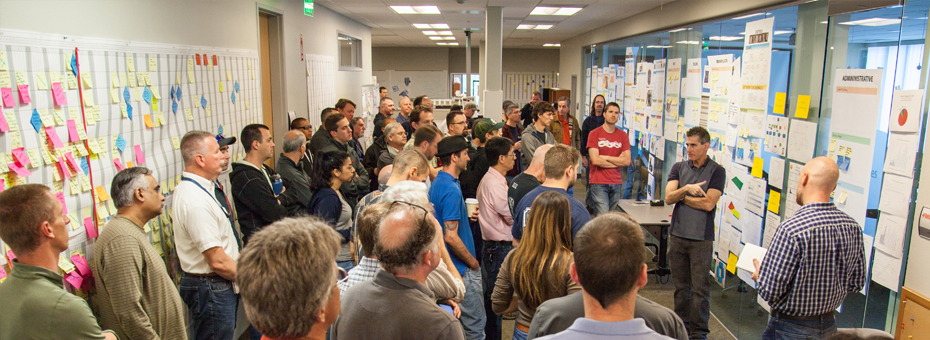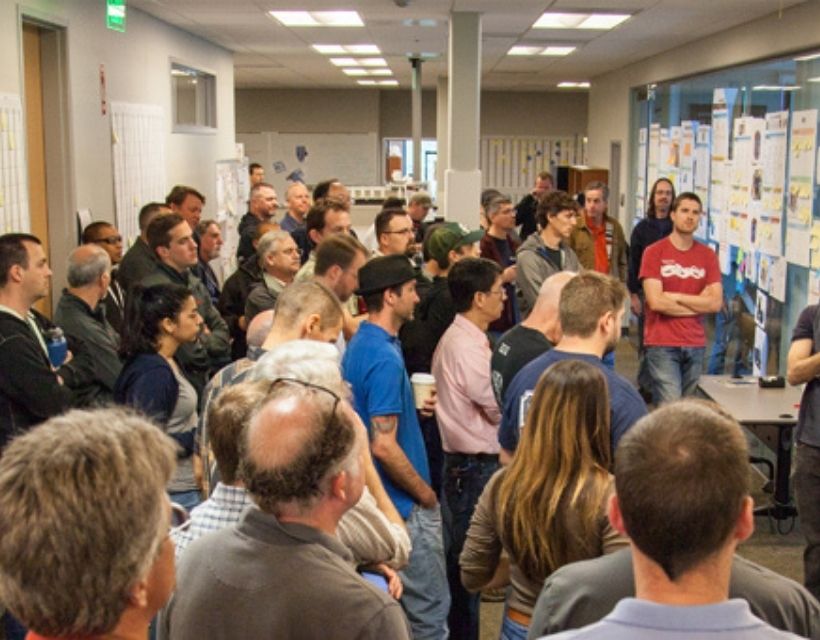Obeya
Obeya in Japanese means simply “big room.” At Toyota it has become a major project-management tool, used especially in product development, to enhance effective and timely communication. Similar in concept to traditional “war rooms,” it will contain highly visual charts and graphs depicting program timing, milestones and progress to date, and countermeasures to existing timing or technical problems. Project leaders will have desks in the obeya as will others at appropriate points in the program timing. The purpose is to ensure project success and shorten the PDCA cycle.


Obeya is a form of visual management. When combined with a cadenced meeting structure it becomes a powerful management system. Management will display critical objectives. For instance, in a healthcare environment it may include performance around patient safety, patience-care quality, and efficiency. This allows a management team to quickly assess performance to plan. Consequently, problems become visible. Moreover, because a meeting commonly includes a cross-functional team an obeya and meeting structure enable horizontal alignment. This facilitates rapid communication around problems to solve and how to solve them.
History of the Obeya
Takeshi Uchiyamada is credited with creating the obeya management system. Uchiyamada was the Toyota chief engineer for the Prius. Uchiyamada lacked the technical depth required to develop and commercialize the advanced hybrid technology that would be required. In fact, no single person at Toyota did. He quickly realized that he would need an unprecedented level of collaboration, transparency and speed of decision making to make this program a success.
Consequently his first pathbreaking innovation had nothing to do with engine technology. Recognizing that his job would be to effectively integrate the efforts of diverse experts and keep the project on track to achieve no compromise targets for performance cost and schedule, he created the “obeya management system.” In this system he met every two to three days with all required technical experts in a room in which all pertinent information was posted on the walls. This information was available to everyone on the team at any time. The G21, which the world has come to know as the Prius, went on to revolutionize the auto industry, dramatically raising the bar for fuel economy and leaving competitors years behind. And the obeya system, credited with making a major contribution to the Prius success, became a development staple at Toyota.
Watch an Example in Healthcare
CEO of a cancer treatment center in Brazil Dr. Frederico Pinto shows their Green Room and explains how it works.
Additional Resources on Obeya

Article
You Can’t Manage a Secret

Article
How do I set up an obeya room?


